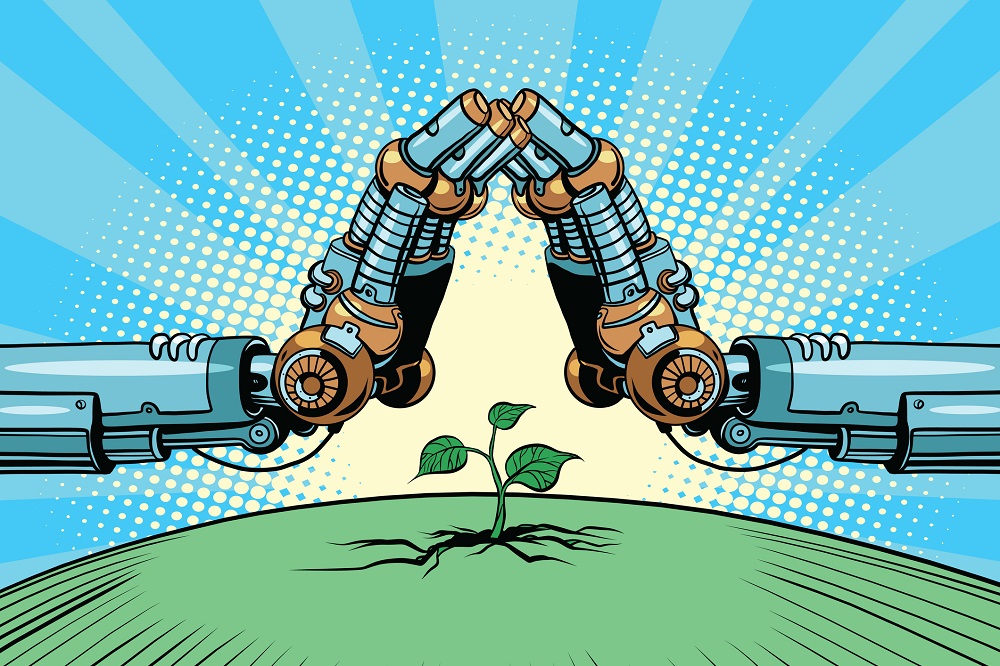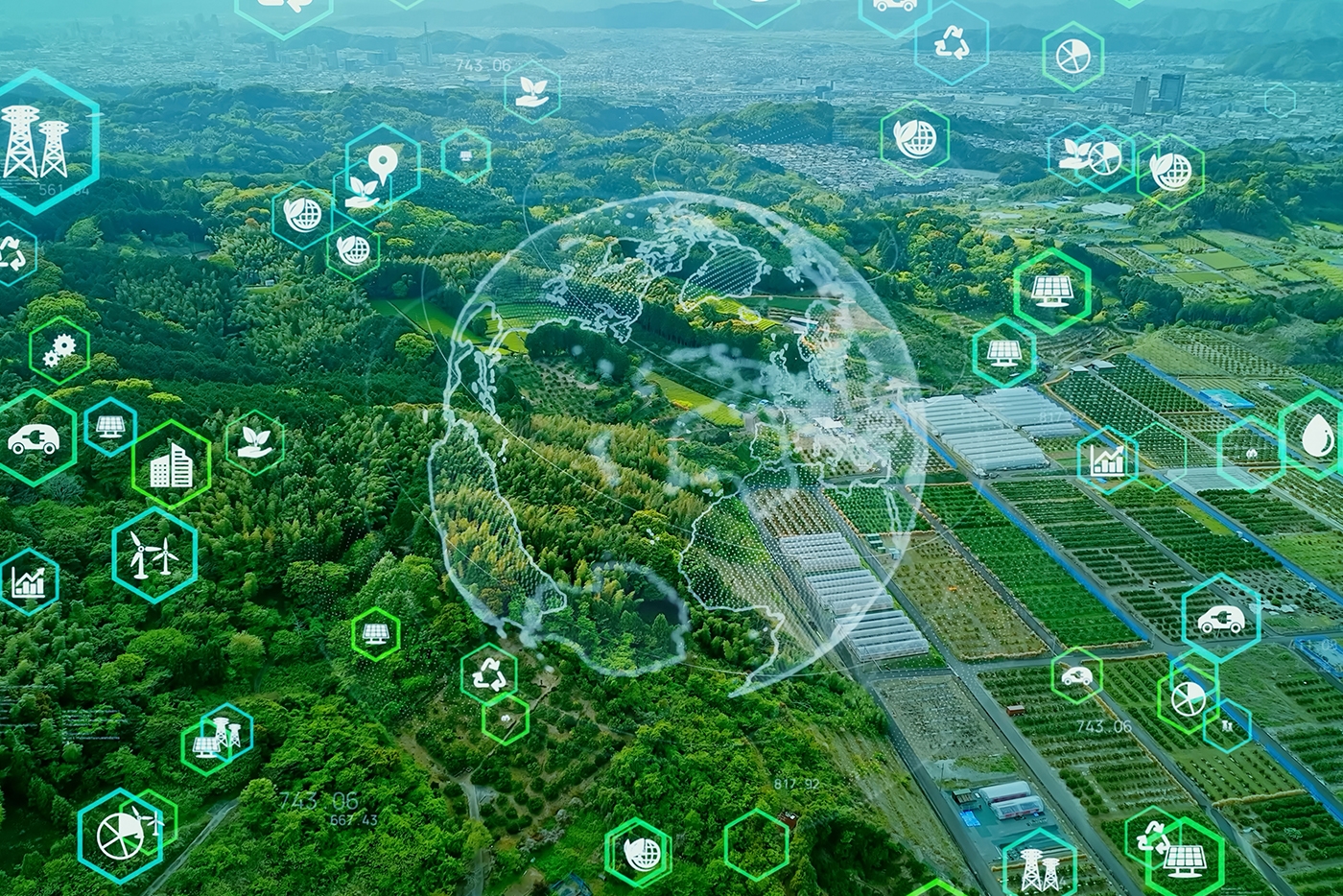Climate change is one of the most pressing global challenges, and as its effects grow more severe, the need for innovative solutions becomes urgent. Artificial intelligence (AI), with its ability to process vast amounts of data and provide insights in real-time, has emerged as a powerful tool for understanding and combating climate change. From predictive modelling of environmental changes to real-time monitoring of emissions, AI is transforming how we address this global crisis. This article explores how AI is helping to identify and address climate change issues, highlighting key applications, successes, and future potential.
1. Using AI for Climate Data Analysis and Prediction

One of the primary ways AI contributes to climate action is through data analysis and predictive modelling. Climate change research requires analyzing massive datasets from satellites, sensors, and historical climate records, which can be challenging for traditional data processing methods. AI algorithms, especially machine learning (ML), can quickly and accurately process this data to identify patterns and forecast future climate events.
1.1 Climate Prediction Models
AI models can improve climate predictions by creating simulations that account for multiple variables, including atmospheric, oceanic, and terrestrial data. Machine learning algorithms analyze historical data to model climate patterns, identifying trends and anomalies that may signal future environmental changes. This modelling helps researchers understand potential climate scenarios under various greenhouse gas emission levels, guiding policy decisions and mitigation strategies.
1.2 Extreme Weather Forecasting
As climate change increases the frequency of extreme weather events, AI-based models play a critical role in forecasting such events. Through deep learning algorithms, AI systems analyze atmospheric data to predict events like hurricanes, floods, droughts, and wildfires with greater accuracy. These AI-powered predictions allow communities and governments to prepare in advance, mitigating damage and saving lives.
1.3 Ocean and Ice Monitoring
Monitoring oceans and polar ice caps is essential for tracking global temperature changes, sea-level rise, and biodiversity loss. AI models analyze satellite images and sensor data to assess changes in sea ice, ocean currents, and coral reef health. For example, Google’s TensorFlow platform has been used to monitor coral reefs and assess their health, identifying areas that need immediate conservation efforts.
2. Real-Time Environmental Monitoring with AI
Real-time monitoring of environmental conditions is another area where AI has proven to be invaluable. With AI, it’s possible to assess air quality, monitor deforestation, and track carbon emissions instantly, providing up-to-date data to policymakers and conservationists.
AI in Legal Tech: Streamlining Legal Processes for a New Era of Efficiency
2.1 Air Quality Monitoring
Air pollution significantly contributes to climate change, and AI tools are being developed to monitor air quality in real-time. AI algorithms analyze data from air quality sensors placed in urban and industrial areas, detecting pollutant levels, identifying pollution sources, and predicting future air quality trends. For example, Microsoft’s AI for Earth initiative has created air quality models that can help cities monitor emissions and implement pollution reduction strategies.
2.2 Deforestation Detection and Prevention
Forests play a vital role in absorbing CO₂, but deforestation remains a significant challenge. AI-powered platforms like Global Forest Watch use satellite imagery and machine learning to detect deforestation in near-real time. These systems can identify illegal logging activities and assess forest loss, alerting authorities and conservation organizations to intervene before further damage occurs.
2.3 Carbon Emission Tracking
Tracking carbon emissions accurately is essential for reducing greenhouse gases. AI can process data from a variety of sources, such as satellites and industrial emission sensors, to provide real-time updates on carbon levels. By integrating AI into carbon emission tracking systems, governments and organizations can identify major pollution sources and enforce stricter regulations.
3. Optimizing Energy Efficiency and Renewable Energy with AI
The transition to clean energy sources is vital to reduce greenhouse gas emissions, and AI can play a significant role in enhancing energy efficiency and advancing renewable energy technologies. Through intelligent automation and optimization, AI can ensure that energy resources are used more sustainably.
3.1 Smart Grids and Energy Distribution
AI-powered smart grids are improving energy distribution by balancing supply and demand more effectively. These grids use machine learning algorithms to analyze energy usage patterns, predicting peak demand times and adjusting the energy supply accordingly. This results in reduced energy waste and ensures that renewable energy sources are used to their fullest capacity.
3.2 Optimizing Renewable Energy Production
Renewable energy sources like wind, solar, and hydro depend on environmental conditions, which makes their output variable. AI can help optimize renewable energy production by analyzing weather data to predict and adjust output. For example, Google DeepMind has used AI to predict wind energy output, achieving a 20% increase in forecast accuracy. This helps utilities better manage renewable energy resources, ensuring a steady and reliable energy supply.
3.3 Enhancing Energy Efficiency in Buildings
Buildings account for a large portion of global energy consumption, and AI can significantly enhance their efficiency. AI-driven energy management systems analyze data from sensors in smart buildings, optimizing heating, cooling, and lighting based on occupancy patterns and weather conditions. This reduces overall energy consumption, lowering carbon footprints and contributing to climate change mitigation.
4. Supporting Sustainable Agriculture and Food Security with AI

Agriculture is both impacted by and a contributor to climate change, and AI is helping make agriculture more sustainable while ensuring food security in the face of climate challenges. Through precision agriculture, AI enables farmers to optimize resource usage, reduce waste, and increase crop resilience.
4.1 Precision Agriculture
AI-powered precision agriculture involves using data from sensors, satellites, and drones to provide farmers with real-time insights into crop health, soil conditions, and water usage. Machine learning algorithms analyze this data to recommend optimal planting times, irrigation schedules, and fertilization techniques. This reduces water and fertilizer use, minimizing the environmental impact of farming.
4.2 Climate-Resilient Crops
AI can also assist in developing climate-resilient crops by analyzing genetic and environmental data to identify crop varieties that can withstand extreme weather conditions. By identifying crops that are more resistant to droughts or floods, AI supports food security in regions facing the adverse effects of climate change.
4.3 Reducing Agricultural Emissions
Agricultural practices, particularly livestock farming, contribute significantly to methane emissions. AI-based tools are being developed to monitor and reduce these emissions. For example, sensors can track livestock behaviour and feed usage, optimizing diets to reduce methane production. Additionally, AI can help farmers identify the most sustainable practices, such as crop rotation and cover cropping, which reduce soil degradation and promote carbon sequestration.
5. Enhancing Climate Policy and Decision-Making with AI
AI’s ability to provide insights from complex datasets has proven invaluable for policymakers and organizations working on climate change initiatives. By offering data-driven insights, AI empowers better-informed decisions that can lead to effective climate policies.
5.1 Environmental Impact Assessments
AI systems can conduct detailed environmental impact assessments, analyzing the potential effects of various projects or policies on ecosystems, biodiversity, and communities. These assessments help decision-makers understand the risks and benefits of their actions, ensuring that projects align with sustainability goals.
5.2 Urban Planning for Climate Resilience
AI can assist urban planners in designing climate-resilient cities by simulating different environmental scenarios. Machine learning models analyze data on weather patterns, population density, and infrastructure to predict how cities might be affected by climate change. This helps planners create infrastructure and policies to protect communities from rising sea levels, extreme weather, and other climate-related threats.
5.3 Policy Simulation and Evaluation
Policymakers often need to weigh the potential impact of various policies before implementing them. AI-driven simulation models enable governments to test different climate policies, such as carbon taxes or renewable energy incentives, to evaluate their effectiveness. By simulating the outcomes of various approaches, policymakers can prioritize the most impactful strategies.
6. AI in Climate Change Research and Public Awareness
Beyond direct applications, AI is playing a role in climate change research and increasing public awareness. AI-driven tools and platforms make climate data more accessible and understandable, empowering communities and individuals to contribute to climate action.
6.1 Facilitating Climate Research
AI accelerates climate research by processing large datasets more quickly than traditional methods. Researchers use machine learning algorithms to analyze data from diverse sources, including satellites, IoT devices, and environmental sensors. AI also aids in creating global climate models that incorporate complex interactions between natural systems, enhancing our understanding of climate dynamics.
6.2 Educating the Public
AI-powered platforms provide information on climate change to a broader audience, raising awareness of its impacts and encouraging sustainable behaviour. Interactive apps and AI chatbots engagingly explain climate concepts, helping individuals understand their carbon footprint and take actionable steps to reduce it. AI-driven social media campaigns also promote climate-conscious choices, encouraging a collective shift towards sustainability.
6.3 Citizen Science and Public Participation
AI-powered apps are enabling citizen scientists to participate in climate monitoring. For example, through mobile apps, individuals can report environmental data such as air quality, water levels, or sightings of endangered species. AI systems aggregate this information, contributing to larger climate databases and making environmental monitoring more accessible to the public.

AI’s potential to address climate change issues is immense. By analyzing complex datasets, predicting climate scenarios, optimizing energy resources, and supporting sustainable agriculture, AI is paving the way for more effective climate action. Moreover, AI’s role in policy evaluation, public education, and citizen science fosters a more informed and engaged society, encouraging everyone to participate in combating climate change. As AI technology continues to evolve, its applications in climate action are likely to expand, offering new tools and strategies to address one of the greatest challenges of our time.



